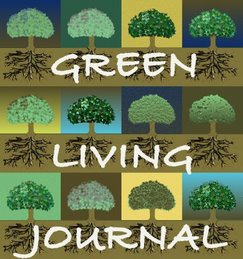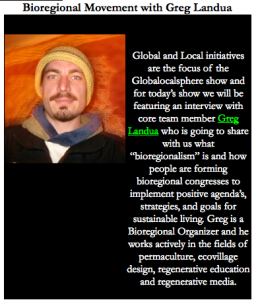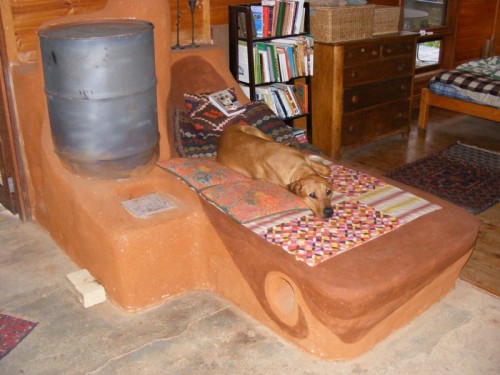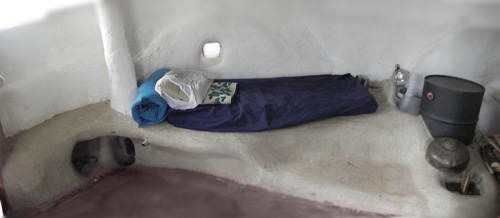Hi everyone — we’re having a very vibrant discussion on the bioregional listserv, and I wanted to share with us a recent post by Alberto Ruz on this important topic:
Hi everyone:
Being a sweat lodge runner since 1979 or 1980, a privilege and responsibility passed to me by Melvim Chiloquim, elder and sweat lodge runner from the Klammath nation, and a peace pipe carrier, a privilege and responsibility passed to me in 1988 by a Council of elder women from many different traditions at the sacred Mayan center of Chichen Itza, being myself a mestizo man with an heritage of mixed French, Afro-Cuban, Mexican, Mayan, Spanish and Dutch blood lineages, I reclaim the right to learn in respect from all the traditions from these and other unknown ancestors, and I reclaim too the right to mix in respect the prayers, ways, songs, dances, medicines, stories, myths, prophecies, ceremonies, from all those and other cultures.
As an earthman and as a planetary human being, I reclaim my rights to inherit the traditions of all the cultures from the Earth, from the past, present and future, and to continue serving in all respect and humbleness the Mother, humanity, all my relations, for the purpose of the betterment of all living beings.
The process of civilization is the result of thousands of years of cultural, ethnic, commercial, military, artistic and blood exchanges among people, each one contributing to the global or planetary civilization we live in today. There are probably less than a 0.01 % of all human beings at this time of history in the planet who could claim not to have had, for centuries or millennia, absolutely any exchange with other people, or have been influenced by the contact with other cultures. But if they claim for any kind of “pureness,” it would be because they would have already been contacted by someone else, and therefore, lost their purity just by that simple act to be claiming for anything only “theirs.”
As bioregionalists we are committing to the place where we live, but probably no one of us can trace their belonging to that specific bioregion for more than three, four of five generations. Especially in the Northern hemisphere. We all came from somewhere else, and we have a history of past mixed marriages in our lineage, that probably are unable to trace down after two or three generations.
First nation people are also the result of the mixture of different people and different cultures, through centuries of mixed marriages, through wars, through colonization, through forced or voluntary immigrations, and therefore, today, probably noone, or maybe just a 0.001 % (if much) could claim not to have had ever any contact with any other culture.
As planetary beings today, we can sit and meditate in respect as the oriental people did for millennia. We can celebrate in respect religious fests from Christian, Jewish, Muslim, African, Indigenous or pagan traditions, use digeredoos from aboriginal people, dress with feathers and clothes from all the cultures on Earth, dance circular peace dances from the four directions, pray with native, Yoruba, Asian or Celtic, drums and blow the conch shells coming from the Tibetan, Mayan or Aztec traditions.
The mixture of human cultures is the sign of richness, a richness that is reflected in Nature, especially in places where beings from the plant, animal, mineral world coexist, and take from each other with more abundance. Monocultures and desertification are signs of poorness. And people and cultures that did not mixed for centuries with others, declined and ended up disappearing.
The importance to preserve the specific elements from each culture, or from species in danger of extinction, has to do with the possibility that those elements do not get lost and our planet becomes each time poorer and poorer. On the contrary, the importance of preserving is to allow that those elements become part of all of us, enriching our lives, and creating a true planetary culture of peace, instead of a global supermarket with a large selection of merchandises.
The unfortunate decease from those people in a sweat lodge has probably to do with the process of global mercantilization and has nothing to do with the respectful appropriation from elements of one or another tradition. And that yes, has to be closely observed. When spirituality, any form of spirituality becomes merchandise, then, yes, we can say that its essential purpose has been distorted. But that can also be considered true for all religious practices. It is not only the problem of adopting elements from Native American ceremonies. It is true for the process of turning ANY element of any spiritual practice (or any teachings or cultural traits) into merchandise.
Should we stop doing Christian ceremonies, as they all come from the Palestinian Semitic cultures from the Middle East? Should we stop talking English, if we come from Cherokee, Lakota or Apache ancestry? Should we stop celebrating Independence Day, Christmas, Carnivals, Thanksgiving, New Year´s Eve, festivals who are the result of many rituals that take their inspiration from other previous more ancient traditions? Should we stop dancing in circles around the fire and singing chants from all proveniences?
As far as I know, people have died in sweat lodges here in Mexico, in Spain, in Bolivia, and maybe in many other places as well. We do not have a record of how many Native people died in sweat lodges through the centuries that this particular ceremony has been practiced. Others died in their vision quests. Or at Sundance ceremonies. People die going to Mecca, people die in catholic pilgrimages, people die in mosques, Tibetan temples, Hindi temples, people die at Candomble, Umbanda, Santeria, voddoo or any sort of Afroamerican rituals, people die climbing or falling from the temples of the Mayan cities…. People die doing yoga and stopping their respiration. People die. AHO!!!
I wish we could have other issues more pressing to focus our time, visions, energies, and purposes. Let’s not buy into the stories the global media wants us to spend our lives. Let’s use our lives to further bioregionalism, yes, but not fundamentalism from any sort. Bioregions are organs, members, bones, blood, tissues from Gaia, Tonantzin, Pachamama. We are born by accident in one bioregion, but we are ALL Earthians, Earth People, Planetary Beings, children from the same Mother. Let’s never forget it please.
My love to you and to all our relations!
Coyote Alberto

 ur mainstream American, or even alternative American construct of time and space. What happened there? I’m not sure although I have some hope that telling you about it will help me know more. Where were we? In some place constant and occasional, ancient and ahead of its time, ceremonial and ordinary, Tennessee and beyond Tennessee. In many ways, the road trip to the congress — all 10 hours of driving plus numerous stops — meant t
ur mainstream American, or even alternative American construct of time and space. What happened there? I’m not sure although I have some hope that telling you about it will help me know more. Where were we? In some place constant and occasional, ancient and ahead of its time, ceremonial and ordinary, Tennessee and beyond Tennessee. In many ways, the road trip to the congress — all 10 hours of driving plus numerous stops — meant t unneling into the world in the center of the earth, and now we’re out again, back to the surface, and I have to say I’m just a little heartbroken to be apart from the congress and all of you who were there (as well as all of you who have been there and simply must be there next time and haven’t yet been there but will be there in the future).
unneling into the world in the center of the earth, and now we’re out again, back to the surface, and I have to say I’m just a little heartbroken to be apart from the congress and all of you who were there (as well as all of you who have been there and simply must be there next time and haven’t yet been there but will be there in the future). others found took us away from our time together; the dancing and singing; the food, which was tasty, but jeez, I seriously missed butter; the long talks heart to heart; the smiles across the circles; the sitting
others found took us away from our time together; the dancing and singing; the food, which was tasty, but jeez, I seriously missed butter; the long talks heart to heart; the smiles across the circles; the sitting ow it when I’m there, and especially when I’m not anymore. The circle if the room where I live best. Hearing each person speak — whether in the opening circle when we crowded into the big room, lopsided and earnest, saying our names and where we were from, or later in the spiral of the women’s circle, when we spoke about being a woman, living as a woman’s body at this age — shows me who we really are together, and who I am apart: a part of the circle.
ow it when I’m there, and especially when I’m not anymore. The circle if the room where I live best. Hearing each person speak — whether in the opening circle when we crowded into the big room, lopsided and earnest, saying our names and where we were from, or later in the spiral of the women’s circle, when we spoke about being a woman, living as a woman’s body at this age — shows me who we really are together, and who I am apart: a part of the circle.
 from some place two hours away, complete with accordion and tutus, to sing, dance, and slip down the
from some place two hours away, complete with accordion and tutus, to sing, dance, and slip down the nd and youngest in the center; both circles
nd and youngest in the center; both circles together, when we crossed over to some common and complex understanding as one, when barriers dissolved and we saw ourselves as being in congress together continually, this meeting a continuation of one that began in ‘84 and will never end, I hope.
together, when we crossed over to some common and complex understanding as one, when barriers dissolved and we saw ourselves as being in congress together continually, this meeting a continuation of one that began in ‘84 and will never end, I hope.
 spent 13 years spreading bioregionalism through the arts througout Central and South America).
spent 13 years spreading bioregionalism through the arts througout Central and South America). energy of the Mexicans,” and who kept reminding Laura Kuri and me that we were his Ninja Muses because when he first arrived, looking just a little confused, Laura and I leapt up and hugged him, and stood — one of us on each side of him — during the opening circle, telling him we would protect him as Ninja Muses.
energy of the Mexicans,” and who kept reminding Laura Kuri and me that we were his Ninja Muses because when he first arrived, looking just a little confused, Laura and I leapt up and hugged him, and stood — one of us on each side of him — during the opening circle, telling him we would protect him as Ninja Muses.
 after, David and Alberto pressing their foreheads together, crying over the loss of this great and enduring spirit, our own dream of the earth.
after, David and Alberto pressing their foreheads together, crying over the loss of this great and enduring spirit, our own dream of the earth.
 * The beautiful site committee and how much they did to make it all work: Greg, Jennifer, Susan, Alayne, Biko, Roberta, and (forgive me, I can’t remember all the names) so many others: THANK YOU!
* The beautiful site committee and how much they did to make it all work: Greg, Jennifer, Susan, Alayne, Biko, Roberta, and (forgive me, I can’t remember all the names) so many others: THANK YOU! oned understandings, misunderstandings and eventual clearings, old hurts and new healings, and above all, something that transcends how we live in the non-ceremonial world and shows us how to bring the village we make
oned understandings, misunderstandings and eventual clearings, old hurts and new healings, and above all, something that transcends how we live in the non-ceremonial world and shows us how to bring the village we make Juan-Tomas, Bob, Stephanie, Andy, Albert; Natalie and Nyela (Sadie’s baby); Laura and Helen (from Mexico); Natalie as cat; the fairies arrive on All Species Night; more All Species (note the porcupine); Bea and me; Gesa; Mark, Richard and the bioregional quilt (started in ‘84, quilted by the men); Fabio and Laura with Stephen Gaskin; Ken, Curtis and others; David and Alberto; Leonor from Venezuela; Stephanie and me; the welcome tent; Gary working on Alberto.
Juan-Tomas, Bob, Stephanie, Andy, Albert; Natalie and Nyela (Sadie’s baby); Laura and Helen (from Mexico); Natalie as cat; the fairies arrive on All Species Night; more All Species (note the porcupine); Bea and me; Gesa; Mark, Richard and the bioregional quilt (started in ‘84, quilted by the men); Fabio and Laura with Stephen Gaskin; Ken, Curtis and others; David and Alberto; Leonor from Venezuela; Stephanie and me; the welcome tent; Gary working on Alberto.




 There is no doubt in my mind that Rebecca is opening a lot of eyes to the unsustainability of our present food system. Take this excerpt from Rebecca’s conversation with permaculture guru Patrick Whitefield [Disclaimer: Patrick is a former teacher and friend of mine]:
There is no doubt in my mind that Rebecca is opening a lot of eyes to the unsustainability of our present food system. Take this excerpt from Rebecca’s conversation with permaculture guru Patrick Whitefield [Disclaimer: Patrick is a former teacher and friend of mine]: